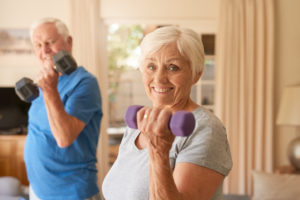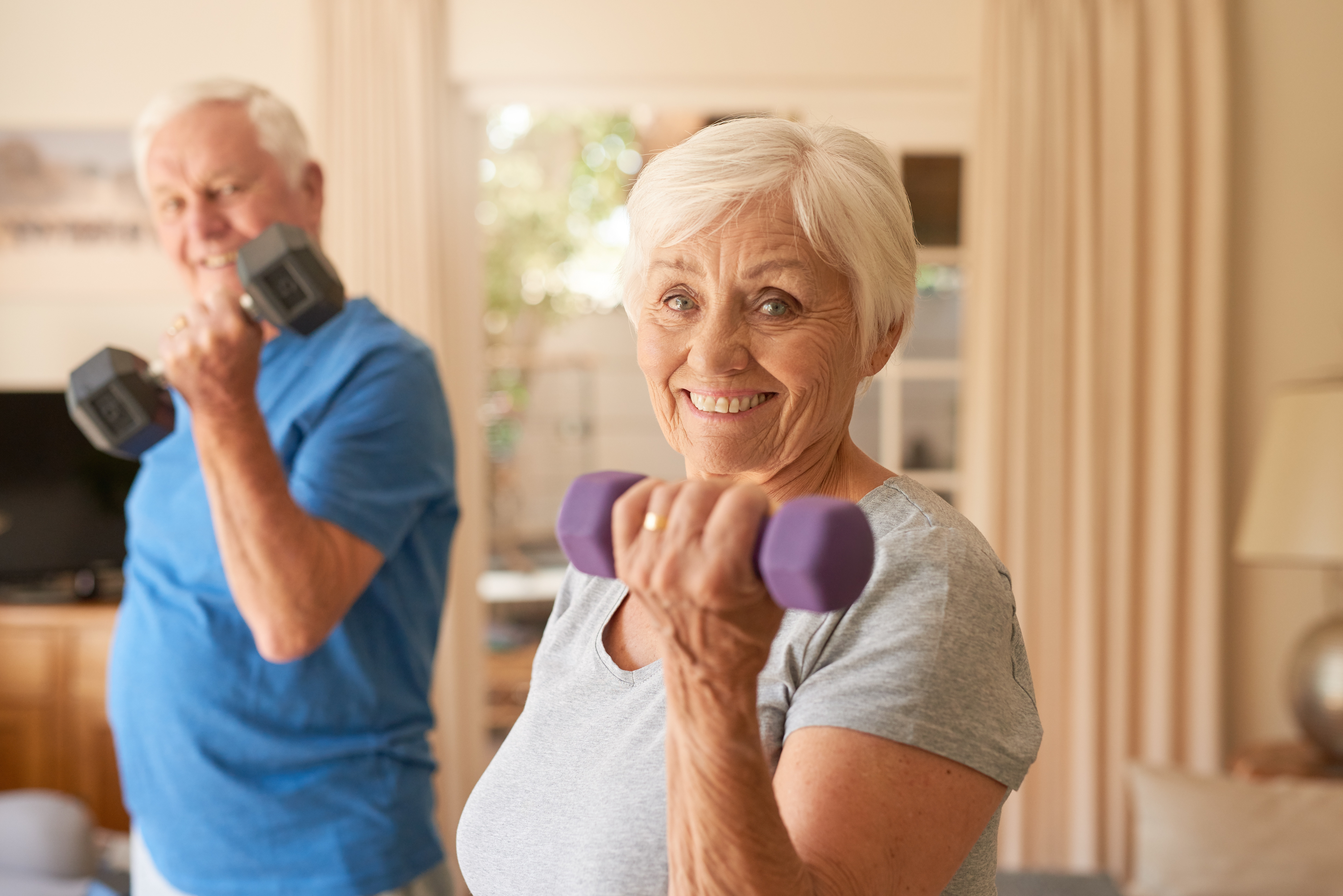
Modern portrayals of senior citizens show smiling, grey-haired couples playing with their grandchildren, enjoying a leisurely stroll, planting a flower garden, and otherwise enjoying an active lifestyle. But the stark reality is that many seniors aren’t physically able to do these things. There is no soccer in the backyard, enjoying a bike ride, or getting down on hands and knees to play in the dirt. As our bodies age, we lose the strength and energy to participate in the activities and hobbies from our youth. In order to become the silver-haired vision of health, we must be pro-active in our health habits, particularly in the areas of nutrition and exercise. Furthermore, when it comes to muscle and strength, you will loose it if we don’t use it.
Exercise for seniors is a relatively new concept. Where adults once worked in manual labor through most of their lives, today’s adults are retiring earlier and finding less active ways to spend their time. We no longer have to physically work to live, forage for food, and chop wood for heat. Since life expectancies have increased and senior lifestyles have become more sedentary, exercising throughout adulthood and into the senior years is vital to maintaining a healthy mind and body functions.
Exercise is commonly credited to a reduction in heart disease since it lowers overall cholesterol levels, increases the efficiency of your heart, and lowers blood pressure. Exercise actually helps your body in hundreds of ways beyond your heart and lungs. There are three important functions that are positively affected by exercise as you age:
Brain Function
Seniors are living longer, but how many are able to enjoy it? Diseases and disorders such as dementia and Alzheimers attack the minds of seniors at increasingly alarming rates. “Use it or lose it” is the new mantra of brain function. Besides reducing the risk of stroke, senior and even elderly exercise is also shown to reduce the natural decline in memory function and cognitive abilities that occur with aging.
Musculoskeletal Function
Exercise increases our ability to move, stretch, and carry our own body weight, (which has been known to increase in the older years, but bonus, exercise can help with that, too). It helps us get up after we’ve sat down, maintain the balance and posture to safely get in and out of bed or use stairs, and find food in the back of the fridge without straining our backs. This leads to increased mobility and decreases the opportunity for injury – two things every independent senior can appreciate.
Systemic Function
You might remember the days when your thighs benefited from those long walks on the beach, but how about your heart? The lungs, digestive tract, and skin also function more effectively with regular exercise. Senior exercise can greatly increase the efficiency of your ability to get oxygen to your organs and expel waste products. This prevents many of the painful and annoying conditions associated with aging, such as edema, bowel obstruction, and incontinence.
Exercise releases hormones into your blood stream that boost your mood and help you sleep better. It decreases your risk of developing cancers of all types, as well as kidney and gall stones. Exercise for women over 50 can also reduce the effects of menopause, including stifling the dreaded hot flashes. With all the benefits attributed to this simple activity, the call to action is obvious. But as an aging adult, how can you be sure to find the exercise routine that is right for you?
Videos and Guides
Exercise videos designed just for seniors will help you slowly build stamina, strength, and flexibility through controlled aerobics and stretching exercises. Most routines offer a variety of substitutions that can be used for seniors with a particularly weak neck, back, or knees.
Special Equipment
New developments in user-friendly senior exercise equipment have made weight training possible for older adults. Extra padding and new designs for popular multi-function weight room machines allow adults with weak joints and muscles to confidently rebuild their strength.
Chair Exercises
Even if you’re not able to stand for long periods of time, chair exercise videos and routines are available to help you redevelop your upper body and leg strength. They can be done in ten to thirty-minute increments, several times per day, to maintain an elevated metabolism, and are especially useful for seniors who are just getting started with an exercise program or are recovering from an injury or illness.
As the Baby Boomers are reaching their fifties and sixties, with their parents headed towards their eighties and nineties, we see an increase in the medical services needed to serve this aging population. While modern medicine can help us live longer, the trend is to squelch symptoms with pills. Heartburn, diabetes, asthma, osteoporosis, arteriosclerosis, organ diseases and deficiencies, sleeplessness, anxiety and depression, and headaches have become generally accepted conditions of old age. But the truth is most of these illnesses could have been prevented through simple exercise and proper nutrition, and many of them can still be minimized and reversed.
Is it ever too late to start exercising? With both short and long-term benefits on your side, the answer is a resounding “no.” However, the earlier, the better. Staying healthy into your older years so you can enjoy your retirement, grandchildren, and hobbies are contingent on taking action now. By starting a fun and consistent senior exercise routine early, you can be sure to enjoy the benefits of better health well into the future.
